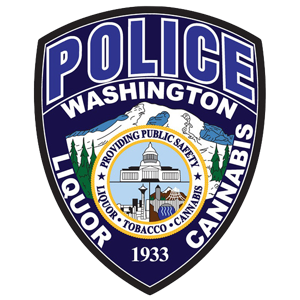The three-member board of the Washington State Liquor and Cannabis Board (WSLCB) and agency leadership meet weekly as the Executive Management Team to facilitate coordination between the appointed Board and staff.
WSLCB - Executive Management Team
(September 19, 2018)
Wednesday September 19, 2018 1:30 PM - 3:30 PM
Observed

Observations
In depth transcription and summary of research scientist Julia Dilley's presentation to the WSLCB EMT on September 19, 2018.
Here are some observations from the September 19th Washington State Liquor and Cannabis Board (WSLCB) Executive Management Team meeting.
My top 3 takeaways:
- Research Scientist Julia Dilley presented results from a multi-state study of the effects of state and local policy frameworks on cannabis use prevalence and public health risk (transcript, audio). She reviewed several specific questions and pointed towards further research for other issues.
- She first addressed the question of youth use and legalization (transcript, audio). Her research confirms a previous study indicating an overall decline in youth use, but with caveats for some demographic categories, and with different results depending on the survey used.
- For some demographics, there appears to be an increase: 11th and 12th grade girls in Alaska, Colorado, Oregon and Washington; and in Washington among 12th grade youth regardless of gender that work 11 hours or more a week in public-facing jobs.
- Director Rick Garza suggested that this is the same as with alcohol, as youth gain disposable income and have access to over-21 work peers.
- With respect to adult use and legalization (transcript, audio), her findings so far indicate that adult use is up in Oregon and Washington, but flat in Alaska and Colorado.
- An exchange between Chair Jane Rushford and Dilley revealed that “adult use” does not differentiate between medical and recreational use, for the study.
- Dilley’s research group measured changes in public health outcomes since legalization by measuring cannabis-related Poison Control Center calls (transcript, audio).
- Dilley: “Washington and Colorado both jumped up, and then they kind of have leveled off a little bit. Oregon hadn’t opened their market in 2014, then in 2015 early retail sales started and we saw a, a jump up. And then in 2016 was the full market opening, and we saw a clearly significant increase in our cannabis related calls to the Poison Center.”
- Board and staff observed that increased public awareness efforts, such as Poison Control advertising; and more willingness to self-identify cannabis use since it’s legal, may be factors.
- Other State-level public health factors examined by Dilley include market trends towards higher potency products; increasing product advertisement; advertising related to home grow ancillaries; and retail stores per capita (transcript, audio).
- Sub-state policy differentiation was another focus of Dilley’s research. City and county-level approaches include analysis of the effect of bans and moratoria on use prevalence; and retail density (transcript, audio).
- Garza noted that their results may be consistent with use prevalence and crime rates related to alcohol density.
- Dilley’s group found that “the percent of Washingtonians living in communities with bans in 2017 is down, at 22%, that’s down from 30 percent in 2016.”
- Dilley also considered arrests statistics since exposure to the criminal justice system is associated with negative as health outcomes (transcript, audio).
- Youth arrests are up in Oregon.
- Arrests are otherwise down for all demographics but racial disparity is growing. It appears the decrease is greater for people in other ethnic categories.
- In response to EMT feedback about racial disparities, Dilley suggested that “[t]here’s more that needs to happen, I think, than just legalizing to, to address disparities.”
- Further questions of interest that Dilley’s group aims to study include opioid substitution (a possible public health benefit); dependence treatment; school policies and school environments; “youth use and policy and retail environments”; and “confusing” messages kids are hearing (transcript, audio).
- For example, Dilley said that “[s]ome parents might be explaining to their kids that this is a medicine that they take for an ailment, which could be confusing for young person”
- Enforcement Chief Nordhorn suggested they look at intoxicant substitution more broadly, including alcohol.
- Dilley responded that Oregon youth are reporting substitution for tobacco, and alcohol, though adults are not.
- Director Garza expressed interest in using Dilley’s research given that other sources on offer to WSLCB are “using numbers that tend to, to work with the position that they have” (transcript, audio).
- She first addressed the question of youth use and legalization (transcript, audio). Her research confirms a previous study indicating an overall decline in youth use, but with caveats for some demographic categories, and with different results depending on the survey used.
- WSLCB Deputy Director Pat Kohler updated the Board on legislative agenda decision packages in four key areas (transcript, audio).
- “One is an overall marijuana package that would involve Licensing and Enforcement, and the support needed in those areas that we’ve identified.”
- Another is focused on non-retail cannabis “because of the significant amount of growth that we’ve had in non-retail.”
- “And then we also had a retail liquor, retail package.”
- The last legislative agenda decision package mentioned relates to systems modernization.
- Deputy Director Pat Kohler addressed improving communication with stakeholders, stating that “… we asked them specifically for how can they help us, and what kinds of ideas did they have to increase communications. So I’m trying to use the [traceability advisory committee] … to help us figure out how best to communicate things and, and resolve issues” (transcript, audio).